Jane Ellyson's Blog
December 2, 2024
What’s so enchanting to North Americans about the Australian bush?
A significant chunk of Alone with a Tasman Tiger is set in the Western Tasmanian wilderness during a survival competition. The Australian bush holds a certain allure for many North Americans because it offers a wild, untamed landscape that’s unlike anything found on the North American continent. There are several things that make it captivating including the exotic wildlife, its remoteness, indigenous cultural heritage, and the potential for danger.
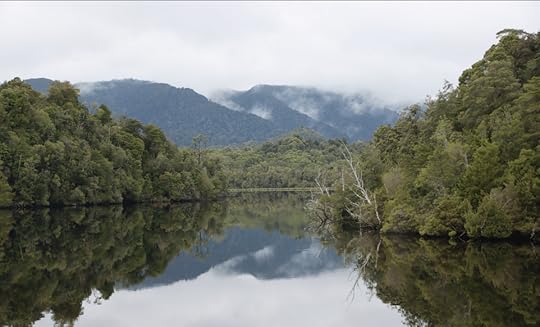
The Australian bush is home to unique creatures like kangaroos, koalas, quolls, wombats, and the elusive platypus—animals most North Americans only encounter in zoos. This diverse, sometimes quirky wildlife seems both familiar yet very foreign, offering a mix of fascination and wonder.
The vegetation is distinct as well. Eucalyptus forests, ancient cycads, and colourful wildflowers create a plant life panorama unlike the forests of North America.
The sheer remoteness of the bush, along with its vast open spaces and dramatic landscapes, brings a sense of mystery and adventure. Many places in the Australian bushland are sparsely populated, rugged, and somewhat dangerous, which appeals to the American sense of frontier spirit and the quest for untouched wilderness.
Aboriginal cultures have a deep connection to the land, and their art, legends, and spiritual practices often evoke curiosity and respect. This rich cultural heritage, tied intimately with the bush, adds layers of meaning and history to the landscape. For many, exploring the bush feels like connecting with one of the oldest living cultures in the world, learning about Dreamtime stories and sacred places embedded in the landscape.
And finally, there is adventure and potential danger. Australian bushland has a reputation for being a challenging, even dangerous environment, filled with venomous snakes, spiders, and other unpredictable wildlife. This adds a thrill for many North Americans who seek adventure. Whether it’s the idea of surviving in the outback, going bushwalking, or learning bushcraft skills, there’s a rugged appeal to the Australian landscape.
Iconic images from movies, television shows, and literature about the bush and outback often paint it as a vast, golden, sun-baked expanse with dramatic skies and rugged terrain. Films like Crocodile Dundee and Mad Max (albeit set in more barren parts of the outback) have romanticized it as a place of adventure and resilience.
Who knows if Alone with a Tasman Tiger: A high stakes race, a missing friend and a search for the impossible will make it to the big screen. I’m ever hopeful and would love to know who you would recommend to play Sebastian Ward and Galina, ‘Betty’ Ivanof.
The post What’s so enchanting to North Americans about the Australian bush? appeared first on Jane Ellyson - Author.
October 6, 2024
Three Australian mysteries
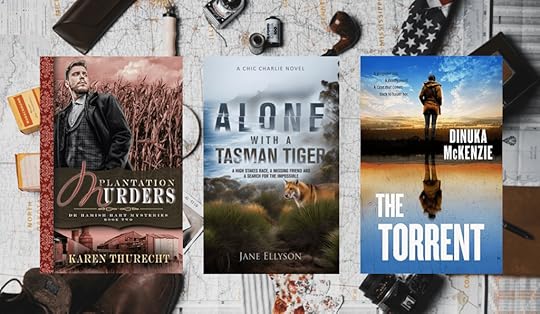 Recommended reading
Recommended readingDo you love a good mystery? If yes, then you’ll appreciate these three novels.
Plantation Murders by Karen Thurecht is delightful and unsettling and would be enjoyed by readers of Australian history. It’s a who-done-it murder-mystery, based on real events in the 19th century. Dr Hamish Hart investigates Kaelo Rees’ wrongful arrest for murder with his friend Rita Cartright. It’s a twisty-turny story with delightful reveals about everyday life in this period.
In Alone with a Tasman Tiger, a fight for domination in the Tasmanian bush, and on the sea during a high-profile yacht race has devastating consequences. Now it’s up to fashion designer Charlotte Harmon together with drummer, Galina Ivanov to follow the clues which will save their partners and stop the spread of a devastating weapon
The Torrent, is a descriptive and highly evocative police procedural novel set during a period of flooding near Murwillumbah in northern NSW. It has diverse and beautifully described characters, with story reveals up until the final pages.
The post Three Australian mysteries appeared first on Jane Ellyson - Author.
September 30, 2024
Choosing a location for ‘Alone with a Tasman Tiger’
 Photo of MONA by Michael Fromholz
Photo of MONA by Michael FromholzNearly all action, adventure, spy-thrillers of the James Bond ilk, have a major chase scene in the final moments of the story. Fans expect it. Alone with a Tasman Tiger is no exception. The winner of the Survival Competition needs to be announced at a great location, and there needs to be a way of bringing the spy story to a conclusion. Why not with a major chase scene in a famous venue?
Curious? For those of you, not-in-the-know, Alone with a Tasman Tiger: A high stakes race, a missing friend and a search for the impossible is a mystery thriller set across Australia and in the United Kingdom.
The plot in a nutshell.
A fight for domination in the Tasmanian bush, and on the sea during a high-profile yacht race has devastating consequences. Now it’s up to fashion designer, Charlotte Harmon together with drummer, Galina Ivanov to follow the clues which will save their partners and stop the spread of a devastating weapon.
As most of the story is set in Tasmania, I needed to find an iconic location for the resolution of the two main stories. The Museum of Old and New Art (MONA), including the Moorilla Estate, perfectly matched my need for a beautiful and dramatic setting.
The MONA is self-described as a museum, or something. The statement reflects their eclectic vision and culture. They are known for being controversial having recently displayed a number of Picasso paintings in the ladies’ toilets. Indeed, the museum often hosts provocative and unconventional exhibitions on topics such as gender, death and religion. Many of the artworks deal with sensitive social and political issues, such as climate change, human rights, and personal freedoms which challenge social, religious, and moral norms.
One of my favourite things is having conversations with people that force me to thing differently. This is clearly the ethos of the MONA. With a few of the stories within Alone, pushing the boundaries of reality, the choice for the site for the final scene, was obvious.
 Photo by Jeff Own. Room used for Kaleidoscope on the Catwalk scene in Alone with a Tasman Tiger
Photo by Jeff Own. Room used for Kaleidoscope on the Catwalk scene in Alone with a Tasman TigerReferences:
https://mona.net.auThe post Choosing a location for ‘Alone with a Tasman Tiger’ appeared first on Jane Ellyson - Author.
September 28, 2024
Book Club Questions for Alone
 What was the hardest thing about being left alone for contestants?What would you find the hardest thing about participating in a survival contest?What ten things would you take into the wilderness with you?Should Scott and Skye have made the decision to wait until the storm passed before crossingThe Paddock in the Sydney to Hobart yacht race?Should Seb have been disqualified from the Alone competition?Should th e competitors have formed attachments to the animals in their local area?What concerns did Yuri and Anya Orlov have about Yuri’s involvement with the Russian
What was the hardest thing about being left alone for contestants?What would you find the hardest thing about participating in a survival contest?What ten things would you take into the wilderness with you?Should Scott and Skye have made the decision to wait until the storm passed before crossingThe Paddock in the Sydney to Hobart yacht race?Should Seb have been disqualified from the Alone competition?Should th e competitors have formed attachments to the animals in their local area?What concerns did Yuri and Anya Orlov have about Yuri’s involvement with the Russiangovernment?Do you think that the Thylacine, also known as the Tasmanian Tiger, is still alive?Why has the Tasmanian Tiger captured the imagination of so many people?
The post Book Club Questions for Alone appeared first on Jane Ellyson - Author.
What’s Galina’s Back Story?
 Images that influenced the creation of character Galina-Elizabeta Ivanof
Images that influenced the creation of character Galina-Elizabeta IvanofI’m often asked what inspires the creation of a character. For me, my protagonist is typically drawn from several people who I know, who exist only in the literary world or who I might have seen and taken a photo of during my travels. This was the case for Galina-Elizabeta Ivanof.
Stieg Larsson’s detective character, Lisbeth Salander, the “The Girl with the Dragon Tattoo,” was apparently inspired by Pippi Longstocking. It came from a work colleague.
Stieg got the idea for the character Lisbeth Salander after a discussion during a break from work. They were talking about how different characters from children’s books would manage and behave if they were alive and grown up. Stieg especially liked the idea about a grown up Pippi Longstocking, a dysfunctional girl, probably with attention deficit disorder who would have had a hard time finding a regular place in the “normal society,” and he used … those characteristics when he created Lisbeth Salander.
Lisbeth Salander has become an iconic and beloved character for several reasons. She is deeply complex with a unique mix of vulnerability and strength. Her personality is shaped by her traumatic past, yet she emerges as a fierce, independent, and intelligent individual.
Lisbeth challenges societal norms, particularly regarding gender roles. She refuses to conform to expectations and maintains her independence at all costs. This makes her a symbol of empowerment, particularly for women who see in her a figure of strength and self-reliance.
Her role in solving complex mysteries, often out of pure curiosity or a sense of justice, makes her a fascinating character in the crime fiction genre.
Her methods are unorthodox, but her results are impressive. And her distinctive appearance, including her tattoos, piercings, and punk fashion, visually symbolizes her rejection of societal expectations. I also like the face that she makes morally ambiguous decisions.
So in case you haven’t guessed, Galina shares some of these qualities but is a softer version of Lisbeth.
This is how Galina introduces herself to the other competitors at the start of the survival competition in Alone with a Tasman Tiger.
‘I’m thirty-six. You are unlikely to remember my name so you can call me Betty. My mother is Estonian, my father was Australian. He died. What are my strengths?’ She spat on the ground. ‘I’ve killed a bear. Does that count? Yes, the bear was protected but my dog was not. I’ve spent many nights in the forest in Estonia. I think that will be useful. There are few things that frighten me. To relax I smoke. When I can’t smoke, I play the drums. I’ve entered this game because, well, why not?’
Later on the story, she reveals her feistiness when a man attempts to pick her up in a bar…
‘Hello gorgeous. Which yacht did you sail in on?’
Galina swivelled around in her chair and looked at the inebriated sailor wearing a shirt identifying him as crew of the Eagle Express. It was obvious from the tone of his question, and the glassy look in his eyes that he was hoping to leverage his team’s recent race success, to success in other areas.
‘I’m not a sailor,’ she replied.
‘Then a model, perhaps?’ he asked. Galina sighed and regarded the man carefully.
‘No. I work at an abattoir. My speciality is disembowelling pigs.’ The man froze, suddenly lost for words.
Intrigued? You can learn about Galina in Alone with a Tasman Tiger. Available from all major online book stores.
References:
The Girl With the Dragon Tattoo is … Pippi Longstocking?
The post What’s Galina’s Back Story? appeared first on Jane Ellyson - Author.
September 25, 2024
What is Havana Syndrome?
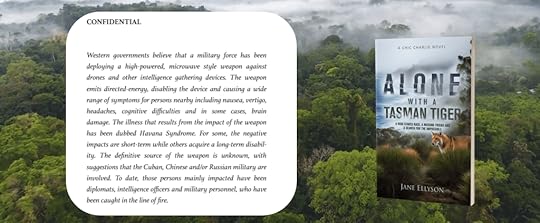 Extract from novel, Alone with a Tasman Tiger
Extract from novel, Alone with a Tasman TigerWinning $250,000 in a bush-survival competition in Tasmania would give Sebastian Ward choices. But he’s promised his mate Scott he’ll sail in the Sydney to Hobart yacht race in 100 days’ time on The Blue Gazelle. Seb’s confident he’ll outlast the other competitors and make it back to Sydney before the starting cannon fires.
At the beginning of the competition, he forms an unlikely relationship with the wild-spirited Galina. This breaks all the rules of the game. When Galina is declared the winner and the organisers tell her that Seb has already left the competition, she suspects foul play.
Meanwhile, Scott and crew have set sail, encountering a phantom yacht during a wild storm. They are blasted by laser, rendering them unable to sail swiftly to the finish as the yacht is damaged and Jason and Scott are ill. When their yacht finally limps into port, few believe their reports of the encounter.
Are they suffering from Havana Syndrome?
Havana Syndrome refers to a set of mysterious and often debilitating symptoms experienced by U.S. diplomats and government personnel, first reported in Havana, Cuba, in 2016.
The symptoms include:
HeadachesDizzinessNauseaFatigueCognitive difficultiesHearing strange noises or feeling pressure in the earsVision problemsSleep disturbancesPeople affected by these symptoms often describe hearing a sudden, loud noise or feeling intense pressure before the symptoms begin.
Possible Causes
Several theories have emerged to explain Havana Syndrome, but none have been definitively proven. Some of the key hypotheses include:
Microwave or Sonic Weapons: The leading theory initially focused on the possibility of directed microwave or sonic energy attacks, intentionally targeting diplomats. A National Academy of Sciences report in 2020 suggested that “directed, pulsed radio frequency energy” was the most plausible cause.Mass Psychogenic Illness (MPI): Some experts have proposed that the syndrome could be psychological in nature, akin to a mass psychogenic illness, where stress and anxiety trigger real symptoms. This theory gained traction due to the absence of clear physical causes in many cases.Environmental Factors: Other explanations have considered environmental causes, such as pesticides, sonic interference, or other toxic exposures in the affected locations.Is Havana Syndrome Real?
The reality of Havana Syndrome is complex. The symptoms are undeniably real for those who experience them, but the underlying cause remains highly controversial.
U.S. Government Response: The U.S. government has treated the incidents seriously, providing medical support to affected personnel and even referring to the symptoms as “anomalous health incidents.” The CIA and FBI have investigated the possibility of foreign attacks but have not reached a definitive conclusion.Skepticism: Some medical experts and researchers remain sceptical of the idea of deliberate attacks, especially given the lack of concrete evidence. A CIA report in 2022 indicated that the majority of cases did not appear to be the result of hostile foreign activity, though a small number of cases remain unexplained.Alone with a Tasman Tiger provides another perspective.
The post What is Havana Syndrome? appeared first on Jane Ellyson - Author.
September 2, 2024
Tasmanian Tiger intrigue continues…
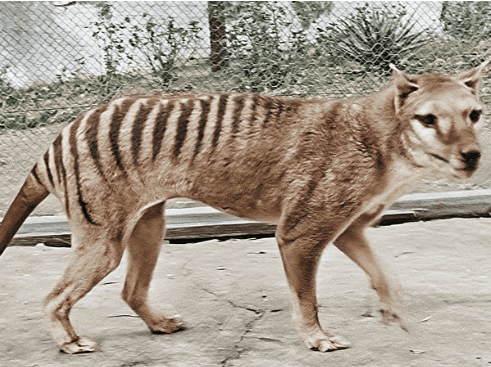 One of the last images of the thylacine taken in captivity
One of the last images of the thylacine taken in captivityWhy are Australians intrigued by, (what happened to), the thylacine, more commonly known as the Tasmanian tiger? The thylacine which is also known as Tasmanian wolf, is (most likely), an extinct carnivorous marsupial that was native to the Australian mainland and the islands of Tasmania and New Guinea. The animal has a lot of fans.
If you’re not from Australia, you’ve probably never heard of the Tasman Tiger that was last seen alive in captivity in1936. Since then, there have been reported sightings with multiple groups sharing theories and photos, ever hopeful that it still exists.
There’s symbolism, mythology and heartache around the Tasman Tiger? Why is this so?
Firstly, the thylacine’s extinction is often viewed as a tragic symbol of human impact on the natural environment. We must do better to preserve life.
Secondly, the thylacine was an iconic species in Tasmania and in the broader Australian consciousness. Its extinction left a lasting mark on the national psyche and serves as a reminder of the fragility of Australia’s unique wildlife.
Thirdly, it’s a symbol of hope. Despite being declared extinct, there have been numerous unverified sightings and reports of the thylacine over the decades. These reports keep the mystery alive and fuel speculation that small populations might still exist in remote areas. The possibility of rediscovering a species thought to be extinct is thrilling. It offers a sense of hope and a potential scientific breakthrough that captivates both the public and researchers.
There’s also a great deal of scientific interest in the animal with its extinction providing valuable lessons for conservation efforts. Understanding what led to its extinction can help in protecting other endangered species. Additionally, advances in genetics have led to discussions about the potential for “de-extinction”, i.e. bringing back the thylacine through cloning or other methods. This scientific possibility fascinates many and adds to the intrigue.
The thylacine continues to appear in books, (like my latest novel, Alone with a Tasman Tiger), documentaries, and films, which helps keep the story alive. Its enigmatic status makes it a compelling subject for storytelling.
Taken together, the mystery, scientific curiosity, and desire to right a historical wrong, makes the thylacine a topic of enduring interest. I hope they find the Tasman Tiger and that my novel piques the interest of a new generation.
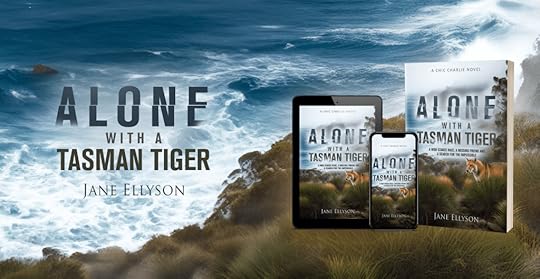
The post Tasmanian Tiger intrigue continues… appeared first on Jane Ellyson - Author.
August 27, 2024
Kaleidoscope on the Catwalk
I love beautiful fabrics and I delight in seeing them transformed into gorgeous gowns. It was why my protagonist Charlotte Wyatt, became a fashion designer because like other writers, I like to live vicariously. You can read about Charlotte’s journey from fashion design student, to model and then body double, in Substitute Child.
While most of the characters in my soon to be released novel, Alone with a Tasman Tiger, spend their time in the bush wearing military disposables or kit from Patagonia, my two leading ladies have the opportunity to don their most dazzling gowns at a fashion catwalk held at the Museum of Old and New Art (MONA) in Tasmania. The event is called Kaleidoscope on the Catwalk, and it becomes a pivotol location in the closing scenes of Alone with a Tasman Tiger.
I recently attended a staggeringly beautiful fashion display by Iris Van Herpen at the Gallery of Modern Art in Brisbane. The gowns were wonderfully whimsical and definitely not in the wearable category. But they would have been at home on the catwalk at the MONA,
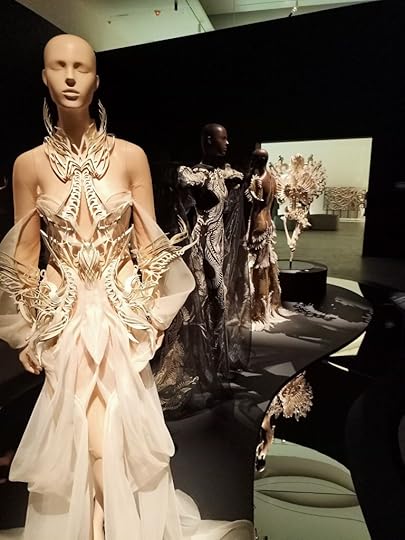 Iris Van herpen gowns on display at the Brisbane Gallery of Modern Art
Iris Van herpen gowns on display at the Brisbane Gallery of Modern ArtThe post Kaleidoscope on the Catwalk appeared first on Jane Ellyson - Author.
August 20, 2024
The beginning of Alone with a Tasman Tiger
Miranda’s screams were peeling paint from the walls of the birthing suite at St Christophers in London, or so Mason thought, while Scott’s cries to hold tight could barely be heard above the thunder and lightning, as the yacht dipped and tilted in the ever-growing maelstrom in the stretch of water that separates Tasmania from mainland Australian. But it was the Tasmanian devil’s manic screeches, in the deep bush of Western Tasmania, that were the most chilling of all, sounding like someone crying out from the dead.
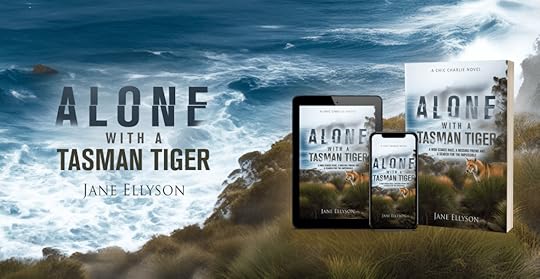
Curious? An Australian mystery. Available for pre-order here on Amazon, Kobo and Apple
The post The beginning of Alone with a Tasman Tiger appeared first on Jane Ellyson - Author.
August 16, 2024
How hard is it to build a raft in the wilderness?
Have you ever tried to build a raft? I remember being on an Operation Raleigh selection weekend and set this challenge as a member of a team. We had to tie together car tyres with ropes and timber slats, with no instruction. We failed miserably and all went for an unscheduled swim as we tried to cross the pond. The successful crossing was of course the main measure of success. It was one of my many failures during this assessment process. I’m just not an outdoorsy person although I aspire to be.
Like thousands of others, I’m a fan of the TV series alone where participants are dropped in the wilderness and left to fend for themselves with the barest of tools. The one who lasts the longest takes home the prize money. Several participants in the different Alone TV series attempted to make a raft. Some were successful. Others not. The challenge of building a raft gave them focus for a while. It can be boring being alone in the wilderness. And of course, if they were successful at making a raft, they improved their survival prospects.
In my novel Alone with a Tasman Tiger, our hero Seb, sets himself the goal of building a raft. It will allow him a different vantage point for fishing and allow him to explore other areas in his designated area in the wilderness. He has limited tools but access to already felled, huon logs. Long-distance rafts have been constructed using timber and rope for centuries. As a child I was entranced by the 1947 journey of the Kon-Tiki expedition across the Pacific Ocean from South America to the Polynesian islands, led by Norwegian explorer Thor Heyerdahl. The main body of the float was composed of nine balsa tree trunks lashed together with hemp ropes. Heyerdahl proved not only these craft were seaworthy but also that they could travel very long distances.
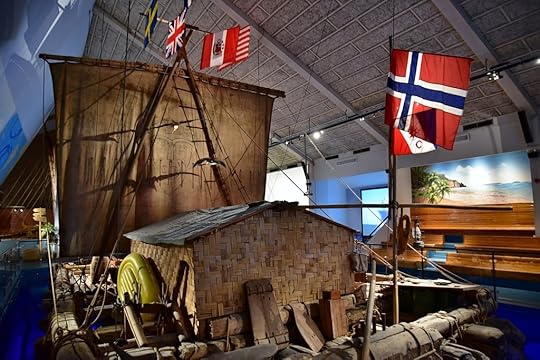
Kon-Tiki raft is now in it’s own museum in Bygdøy peninsula in Oslo, Norway.
Owner of image of Kon-Tiki
Bahnfrend, CC BY-SA 4.0 , via Wikimedia Commons
Seb didn’t end up travelling that far, but did end up in a load of trouble. You can read what happened in Alone with a Tasman Tiger.
The post How hard is it to build a raft in the wilderness? appeared first on Jane Ellyson - Author.



